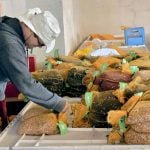More than 30 cattle and 10 horses were killed by anthrax in Manitoba last year.
Manitoba Agriculture is urging producers to vaccinate against the disease this year. Vaccination is recommended at farms where anthrax was previously found and in herds pastured within a 16 kilometre radius of those farms.
“If you have been in an area where anthrax was ever reported, you should be vaccinating,” said Shelagh Copeland, Manitoba Agriculture’s manager of farm production extension.
“If we just take reasonable precautions, it’s something we can manage and control and we have the tools to do it.”
Read Also

More factors affecting winter weather
When you combine a weak La Niña, early Siberian snow, and a warm northern Pacific, it’s easy to see why long-range winter forecasting is so complex.
Spring flooding tends to add to the risk of anthrax infection on pasture. Flooding can unearth anthrax spores if they are embedded in the banks of a stream or river.
Where the spores exist, a high water table can carry them to the surface. As the water evaporates, the spores become concentrated, creating the potential for a lethal dose if cattle or horses graze there.
“It does tend to coincide with previous periods of flooding and then periods of hot, humid weather in the latter part of summer,” Copeland said.
In areas where anthrax is a concern, the vaccination should be given before cattle are turned out on pasture.
Last year, anthrax appeared in areas where it had never been reported before. Copeland urged producers to be vigilant for any unusual deaths that occur suddenly and to get an accurate diagnosis.
Because anthrax is a reportable disease, the Canadian Food Inspection Agency will investigate if it appears to be the cause of death. A payment of up to $500 per animal will be made if anthrax is found to be the culprit.














